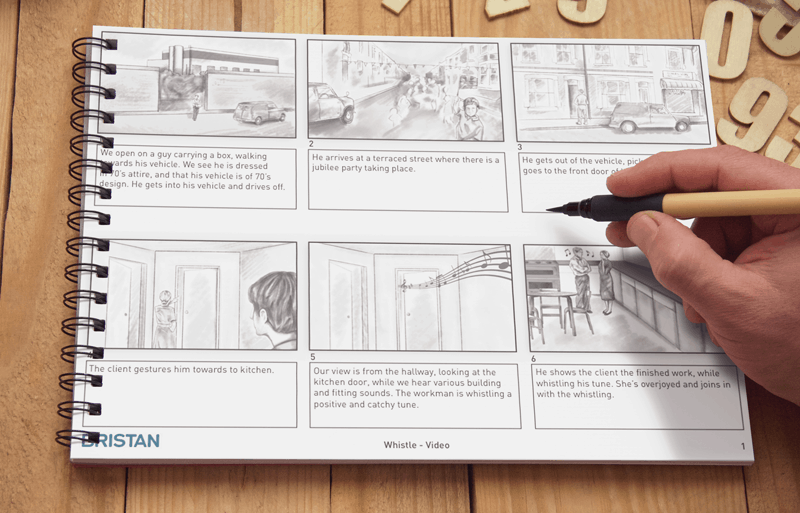Role of Storyboard Templates and Communication to Filmmaking
Experienced animators, hobbyist Filmmakers and cutting-edge Web programmers have one common tool in their imaginative toolboxes: storyboard templates. The storyboarding process, basically a series of sketches, makes any sort of live action or animated production run more easily, since the script is interpreted before film starts to roll literally or figuratively. Aside from the creative benefits, this ultimately saves money and time. Additionally, with a clear vision down on paper, there are fewer opportunities for miscommunication on the set or in the editing room, which means a more joyful production crew and a near-seamless end product.

The storyboarding process begins with a basic template frequently a Sheet of letter or legal-sized paper using a set of boxes or panels on it. Each framework is proportionately sized into the production’s needs. For instance: widescreen 16:9 aspect ratio, full screen 4:3 or 35mm. Under each of these panels is a boxed area fractions notes: written directions like camera angles, perspective, panning, lighting, special shots and so forth. Filmmakers and others Can Buy storyboard templates or even download them for free online. These templates are particularly popular with student filmmakers, as numerous storyboards are needed as part of film school portfolios.
Remember to consider the aspect ratio when choosing to download a printable template. A ratio is suitable for full-screen jobs, including television, but if you are shooting for widescreen or HDTV, you will need 16:9 panel templates. Even less-serious home videographers or Web site owners can create the use of Movierulz storyboarding when preparing their jobs. When the creative vision is down on paper, new ideas may come to light as the storyboards are seen and even shuffled around to look at new methods of interpreting the script or aims of the production.
When the message of a scene is emotionally organized with the aid of storyboard templates, the storyboard is introduced to other members of the production group. Or, aspiring filmmakers may use detailed storyboards in their quest to secure financing for their project. These are known as demonstration boards, and establish that showing vs. Telling is frequently the best way to get one’s story across. Ad agencies can also use storyboards in pitching commercial concepts to their customers. Professional storyboard artists may spend untold hours obstructing out each scene of a major motion picture, even though a hobbyist may find the Inspiration he or she desires with only one page filled with stick figures and notes.
